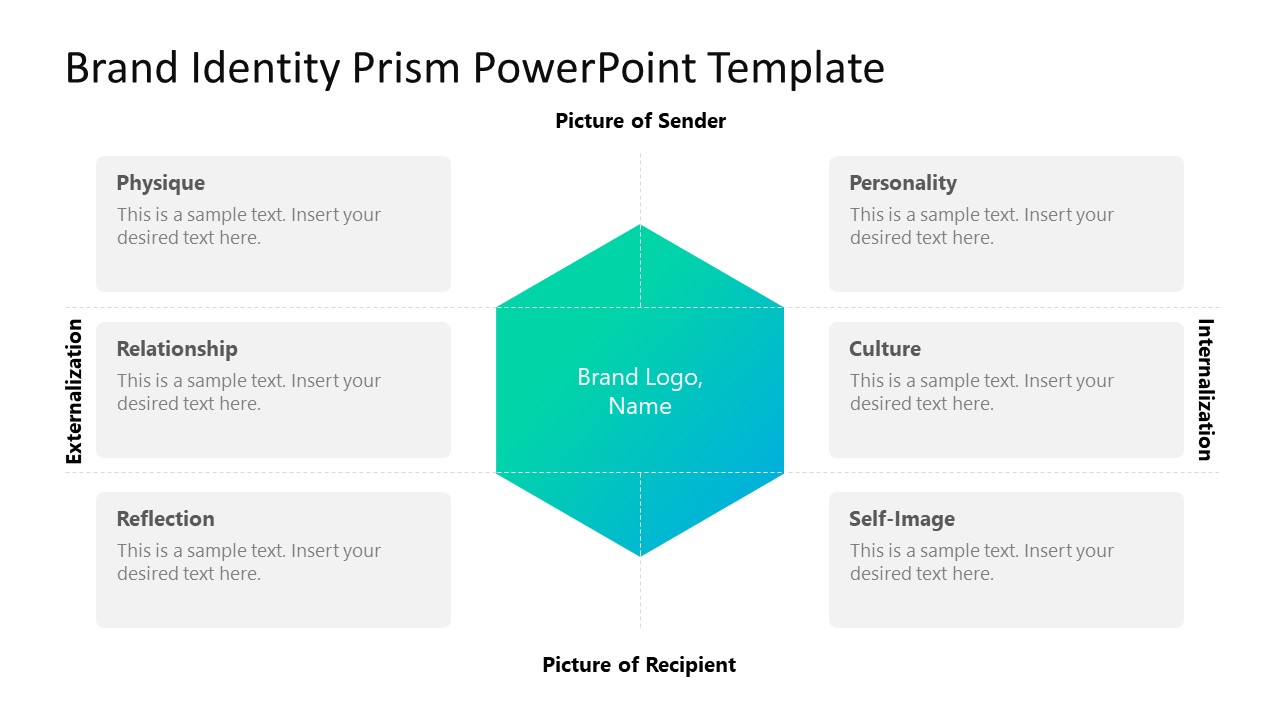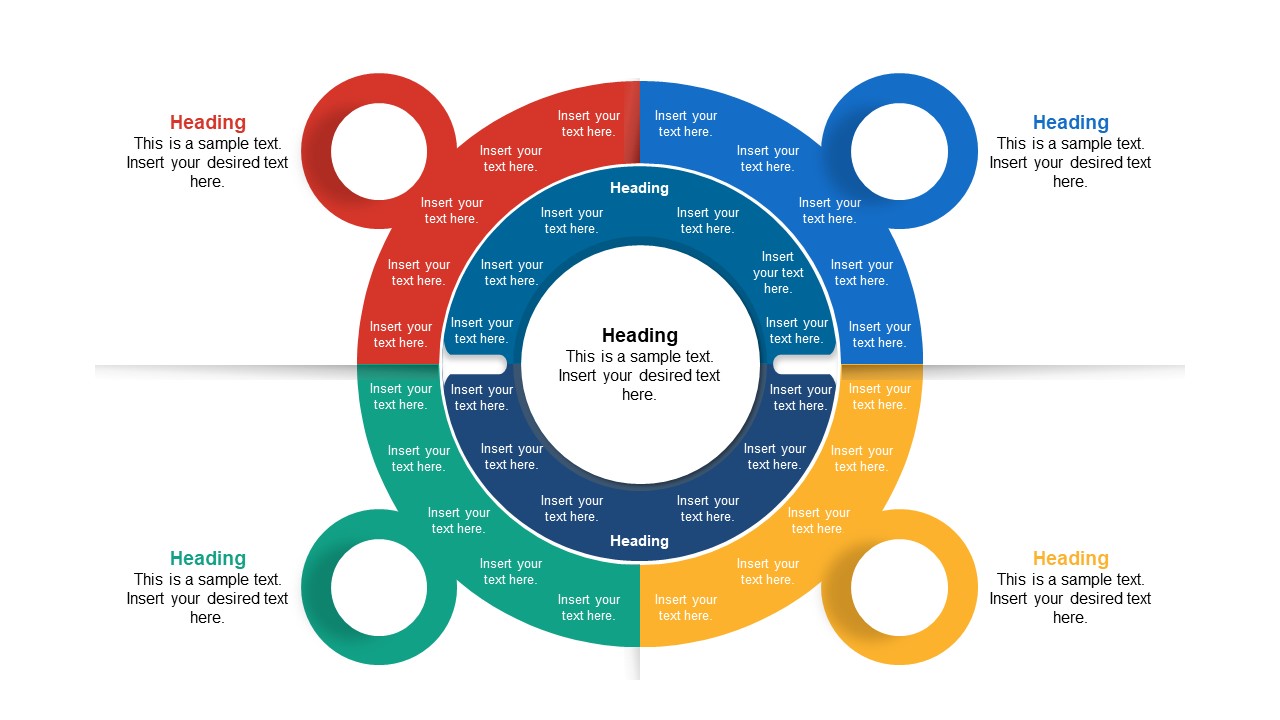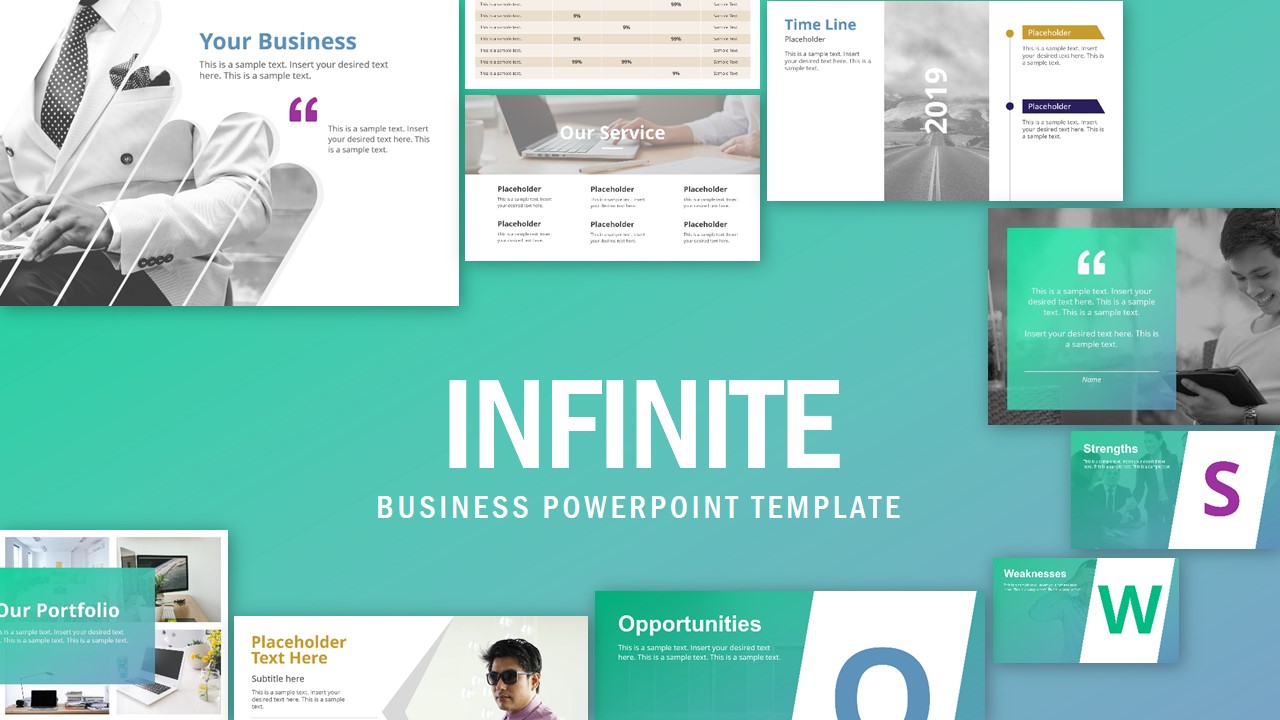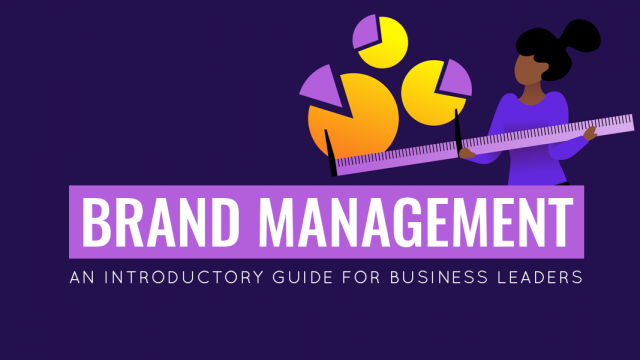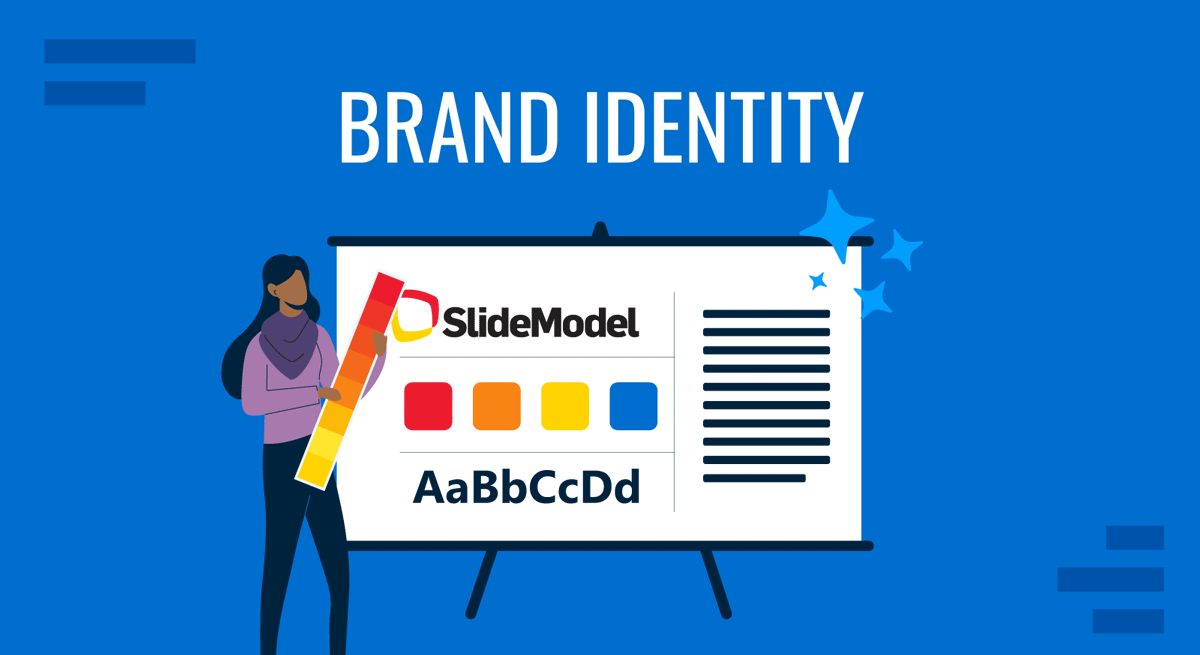
Presenting your brand to a new market, investors, or even your client base, is a process that goes beyond a logo presentation. Companies seek the expertise of designers to express their core values through a visual language, going from typefaces, logos, color schemes, and many other components of what’s known as branding guidelines.
Whenever we have to present a brand, either because it is a new company or a re-branding process, customers aim to discover how their brand would look on different platforms like websites, social media, printed format, and more. Designers and teams should master the art of brand identity presentation to clear out any potential doubt in the target audience, and that’s the topic we shall discuss in this article. Stay tuned for insights on what brand identity is, why it is relevant for businesses and organizations, the process to generate a brand identity presentation, and how to disclose this information for company-wide alignment.
Table of Contents
- What is Brand Identity?
- The Impact of a Strong Brand Identity on any Organization
- The Role of the Personal Brand
- Creating a Brand Story
- Visual Branding Elements
- Verbal Branding Elements
- How to Present a Brand Identity
- Selected Templates for a Brand Identity Presentation
- Final Words
What is Brand Identity?
We can define brand identity as the combination of content choices, from visual assets to the written word, representing a company’s values and aesthetics. It is the first impression a customer or investor can get from your brand.
Brand identity is made out of these elements:
- Brand Visuals: Logo, color scheme, typefaces or fonts, illustrations, videos, photography, visual layouts.
- Brand Voice and Tone: The slogan, website written content, social media publications, email marketing, advertising copy, etc.
For some companies, both brand visuals and brand voice are pretty much apparent, as in the example of Red Bull, with its strong presence in multiple sports venues and worldwide advertisement, as well as with its slogan: “Red Bull gives you wings.”
Smaller companies, although they count on both elements, tend to focus on one aspect over the other due to a lack of resources and expertise. It is typical to focus on logos and visuals and neglect the option of counting with a powerful slogan.
The Impact of a Strong Brand Identity on any Organization
As stated by Forbes, having a strong brand identity is a key pillar in driving customers. It speaks of professionalism and induces both attracting and retaining customers, reinforcing customer loyalty over time if they identify with your brand’s values.
Increased Brand Recognition
Let’s consider the scenario of a new brand landing on a market niche. Establishing a strong brand identity from the beginning helps potential customers acknowledge your brand. This, in turn, makes customers clearly recognize what differentiates your product or services from competitors in that niche.
Just in case you consider brand recognition and brand awareness as the same thing, they are individual steps on the ladder to customer acquisition. Brand awareness comes first, as potential customers know your company exists, but that won’t turn into leads. Brand recognition gives you better positioning in your niche, with endorsements over your work and the quality of your products. One example of brand recognition is Colgate, a brand anyone can associate with dental care, but that doesn’t imply every single customer available in that market will buy a Colgate dental paste.
Customer Referrals
The social proof factor drives new customers to land at your door by cultivating a brand identity that connects with the audience. This can be accomplished either through customer reviews, customer referrals, or influencer marketing – but none of these tactics can work if your brand isn’t identifiable by just naming it.

Say, for example, we talk about the latest Samsung smartphone released. Anyone can get a mental picture of the smartphone’s appearance, features, and average price tag. If we talk about a less-known brand, Infinix, many people worldwide won’t know the brand exists. That’s strictly linked to their brand positioning in leading markets and their use of social factors associated with brand identity to promote themselves beyond their usual marketplace.
Increasing Customer Loyalty
According to the latest PwC Customer Loyalty Survey, 62% of Gen Z customers would recommend a brand they are loyal to friends and family. Although that percentage decreases with the aging generations, it doesn’t hit below 45%.
A list of different factors could form customer loyalty:
- A company’s core values by which the customer feels identified.
- The product represents a lifestyle standard the customer has or aspires to have.
- Positive customer experience – this point, in particular, is critical, with 37% of the people surveyed in PwC’s report ditching a brand they were loyal to due to a bad experience with the product or service, followed by 32% that stopped purchasing due to poor customer service.
- Convenience – generally seen in the food industry, where people remain loyal to a brand as it always displays in stock and ensures the same quality.
- Rewards can be a driving factor, especially when customer loyalty is repaid through a rewards-gift program, like consumers acquiring points per purchase they can later exchange for products they like.
A clear example of brand identity and customer loyalty can be found in the IT industry, with Microsoft and Apple. In 2022, the app Microsoft Teams was revised regarding the self-view being stuck to the bottom right corner of the screen during video calls – a distracting factor for over 5000 users. This could hardly seem a surprise if we remember “Trustworthy Computing” is to be considered among the mission statement of Microsoft. Blatantly ignoring the complaints raised by countless users would signify Microsoft is turning its back on its brand values, thus damaging its reputation and exposing itself to losing customers to competitors in the market, like Slack. Apple has experienced similar situations, revisiting released products or considering users’ complaints, such as when the Home button was removed from their iPhones.
The Role of the Personal Brand
Brand identity concepts do not remain exclusive to companies, NGOs, or any other type of organization. Solopreneurs can adapt these teachings to growing their business positioning as their own name is, in some cases, a brand with immense value in their niches. Some notable cases are Oprah Winfrey, Gary Vaynerchuk, Lionel Messi, Kylie Jenner, and Dwayne Johnson, to name some cases.
If we mention “The Rock” in any conversation (Dwayne Johnson), anyone knows who we are talking about. That’s the value a brand identity can bring to a solopreneur or influencer, but let’s analyze the factors that rule brand identity for personal brands.
Who Are You, and What Do You Have to Offer
Much like what happens with companies and organizations, personal branding is all about the value you bring to your audience. Customers resonate with your story, with the value you bring to the world, but also if your actions reflect values they currently possess or aspire to achieve: who you hang out with, what you do in professional life, which are your dreams and ambitions, etc.
Connecting with the Topics the Audience Cares About
Any life coach knows how to tailor the content their produce to grab the audience’s interest for acquiring new customers or building their brand reputation. They won’t waste efforts producing content beyond their expertise or what their target audience is seeking. This is being a specialist rather than a generalist.
Initially, the content produced may drive little to no engagement. Still, the efforts pay back over time when consistent work becomes noticed by an audience with similar interests. Then, word-of-mouth, your name (your personal brand), starts to get the attention of people seeking that type of guidance or service. This process is well-known by solopreneurs worldwide, regardless if their contribution is linked to helping others or if they are professionals who work their career path individually (i.e., software developers, graphic designers, chefs, etc.)
Connecting with the human factor
Have you questioned why so many content creators place themselves in front of a camera when they speak rather than sticking to a voiceover method while showing relevant content to their brand? The quote, “People buy from people that they know, like, and trust” (Bob Burg, Endless Referrals, 1993), is still relevant to date.
Marketing campaigns are usually created showcasing a person using a product or service. Personal brands should use their skills to build trust with their audience, increase loyalty, and prove why their product or service will change their lives for good.
One of the big reasons why Apple entered the cult reputation they have is because of Steve Jobs. People connected with Jobs’ view of the world, his creative capacity, and his work ethic. Tim Cook holds the same torch nowadays, and his influence has shaped how Apple reacted to the abrupt changes in the technology market. A good example of this, and why it builds trust, is the refusal by Apple to share user data, a tendency that has led Meta and other companies in the same industry to face massive backslash and even legal actions.
Branding Style
As a final note on personal branding, solopreneurs build their followers by developing an aesthetic in which they produce their content. This involves visual layouts, color, environment, fonts, music, transitions (for video), lighting setup, and more. What they guarantee from that hard work is that people easily identify the content by whom it is produced. These rules also apply to the tone used when disclosing content, whether it’s funny, serious, or inspiring.
Applying a branding style should be cohesive, covering video content, website, social media posts, email marketing, and any other medium you use. Even when creating an email signature or a simple social media post, maintaining consistency in your branding style is crucial to making your brand easily recognizable and memorable to your audience.
Creating a Brand Story
This section will cover the core elements you need to create a brand story for creating your company’s or your personal brand identity.
Defining the Brand’s Mission, Vision, Purpose, and Values
This essential step will give you insights into what should be reflected in terms of the narrative and the graphical assets.
Defining the Brand’s Mission
The first step in this process is defining the brand’s mission. You need to identify the core values that guide your brand. What the brand stands for, and what is its aspiration. In order to do this, it is required to analyze the target audience to understand their needs, desires, and pain points, then acknowledge where your brand stands in terms of providing a solution.
A SWOT analysis can give you valuable insights into those aspects mentioned above and find hidden opportunities.

Continue by crafting a concise but powerful mission statement. It should be specific, actionable, and give a sense of direction to any of your team members.
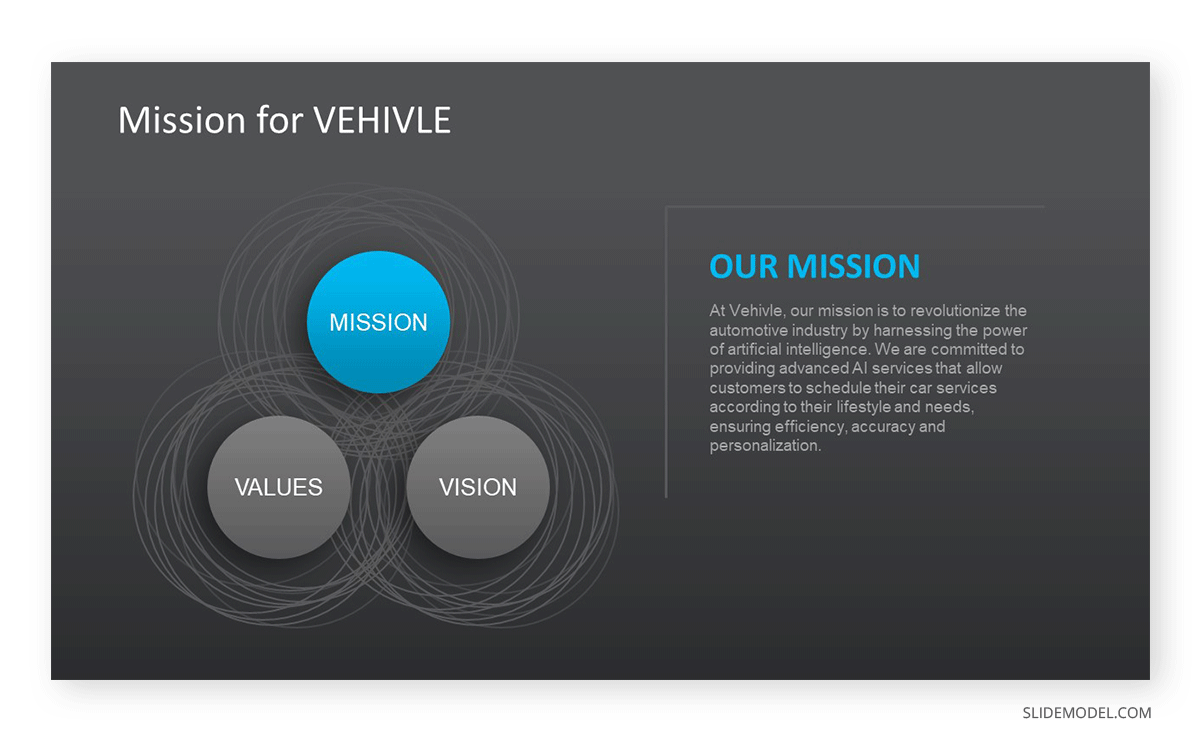
Defining the Brand’s Purpose and Core Values
In order to create a Vision for our brand, we must first define its Purpose and Core Values. Consider the essence of your brand. What does it stand for, and which attributes do you want it to be recognized for. In the case of companies, this task will involve the insights of different stakeholders and team members. Don’t ignore the opinion of any of the members representing the brand, and encourage honest discussions so you can address the main elements that resonate among all parties.
Clearly define each value with a level of detail that allows you to repurpose that content for publication if required (i.e., adding a page labeled “Our Values” on your website).
The Purpose is derived from these Core Values. It should consider the brand’s impact on different tiers: target audience, industry, and society. For example, a company whose core values are linked to preserving the environment will craft a purpose statement that will link its intention to help society as a whole.

Defining the Brand’s Vision
The Vision leads the long-term path, aligning your efforts with the aspirations you define. On this behalf, the first step is to revisit the brand’s purpose. This is why your brand exists; the vision statement should reflect that.
Proceed to picture the future state of your brand. Where do you see yourself and your team in 2 years? In 5 years? Maybe in 10 years? Answering those questions in alignment with the mission, core values, and purpose makes the path clear to define what you envision for this brand.
Remember, a brand’s vision can be changed over time and this tactic that companies in the growth process tend to apply, as once they fulfill their vision, they move toward new horizons.

Identifying Your Target Audience
Although we should have defined the target audience to create the mission statement, this step involves going a layer deeper to gain further insights. We will use an example to illustrate this situation.
Acqua Vital is a skincare company that produces cruelty-free products, apt for vegan consumers who seek the best quality organic ingredients to create their products. They take their purpose of bringing skin care and environmental conscience together to the point of working with recycled packaging and offering seminars on selecting the best skin care products according to age and lifestyle needs. In this way, Acqua Vital fulfills its vision of becoming their region’s leading eco-friendly skincare brand.
Now, who would be Acqua Vital’s target audience? For instance, vegan consumers and animal lovers are targeted by the composition and manufacturing processes to create their products. Their ICP (ideal consumer persona) should reflect these values:
- Conscious or activist for the rights of animals in skin care testing procedures.
- Vegan (non-exclusive).
- Concerned about environmental health.
- Someone who lives an active lifestyle in contact with nature.
- A person that doesn’t care about paying more for quality, organic ingredients.
- A person who is interested in knowing the ingredients and procedures that involve creating their skin care products.
- Optional: People with specific skin necessities that cannot use chemical-based products.

Using this methodology helps to narrow down the potential consumers of a brand and direct the brand identity to make it both relevant to the company’s values and attractive to the target consumer.
Building a Brand Narrative
Now that we have all the initial assets, it is time to construct the narrative that connects all these factors and back up both Visual Branding and Verbal Branding.
You can use a storytelling structure, like the hero’s journey, to explain what drove your brand to act upon solving a specific need in the market and how your brand brings a solution to that. Multiple storytelling models can be used for the brand narrative or to present the brand identity to an audience.
Ensure to establish an emotional connection with your audience by emphasizing the brand’s core values and how this brand will work to help the customer’s life. This can be tailored to meet the communication channel touchpoints, as the audience that reaches your website may not be in the same demographic group as those who met you via TikTok. Visual communication techniques should be applied in this section to create quality content that resonates with the ICP.
Visual Branding Elements
Logo Design
Making a successful logo presentation is vital for brand identity design projects. The idea is that the logo easily reflects the brand’s core values, but just exposing the logo in plain format won’t help people identify the context.
Ask your designers to deliver the logo (and editables) with real-life situation scenarios applied. Say, your brand is about coffee barista accessories, then have your logo placed in a coffee mug or a French press machine. Give as much realism as possible, and also test the logo’s functionality in other mediums like print format (branding kits are a great help for this purpose).
Color Palette and Typography
The selected color palette and complementary colors for the branding project must be included among the branding guidelines the designers should deliver. This helps members in a company-wide context to acknowledge the usage of color and typefaces in content production, including an advertisement, written copy (blog or email marketing), PDF deliverables, etc.
If the color palette is made out of exclusive colors, then the HEX values must be specified for easy replication and showcasing a sample of that color.
For typography, the branding guidelines must showcase the typefaces used in headings and subheadings, the allowed formats for bold and italic, and selected combinations for pages and print.
We recommend you check our articles on color theory and fonts for presentations for more insights about how to select good options for your project.
Images and Other Visual Assets
Photography, illustrations, and video should be handled with care. As mentioned before, these elements should work in combination with the other branding assets, as they are touchpoints that users will come across to discover your brand.
Seek the help of professional designers and photographers to list in your corporate identity design project the guidelines regarding which color grading palette to use, layout settings, white balance, and tonal range, etc. For illustrations, style, and color palette must be checked before using any asset.
Verbal Branding Elements
Defining the Voice and Tone of Your Brand
Expressing the brand’s voice implies recognizing its authenticity value. Some community managers are masters in the art of connecting with their target audience while remaining in their role of being a brand and not a person. A clear example is seen on Twitter, where some brands nail this strategy: the Massachusetts Institute of Technology (MIT) Twitter account is filled with research information relevant to students and academics, nerdy facts, and sharable knowledge that can serve society in general.
As a general rule, don’t force a funny or formal tone in your brand’s content; users see through that easily these days. Remain respectful of your audience, balancing the communication style to represent your brand with the context you wish to disclose content – meaning, the channel in which you are distributing the message.
Taglines
A book by Alina Wheeler named “Designing Brand Identity: An Essential Guide for the Whole Branding Team” defines this term: “A tagline is a short phrase that captures a company’s brand essence, personality, and positioning, and distinguishes the company from its competitors.” Reusing the Red Bull example, “Gives You Wings” is the company’s tagline, and it is so connected to the company’s core values that multiple initiatives are reflected by that slogan, such as its charity program “Wings For Life,” a foundation that seeks to find a cure for spinal cord injuries.
We can then ask, what is the difference between a tagline and a slogan? The end use of the catchphrase can distinguish that. The tagline represents the brand and its values. In contrast, the slogan is used for a specific product or campaign. We can identify the ever-popular “Just Do It” from Nike as a successful use of a slogan.
Follow these tips to build a powerful tagline:
- A tagline must be memorable, likable, and related to a brand’s core values.
- Use emotional value to connect with the target audience.
- Condensing a tagline works best than working with a large format.
- Avoid using jargon, as any potential customers should be able to understand the tagline, even if we talk about someone not working in the same industry.
- Work with your USP (Unique Selling Points). What do they highlight in terms of your brand’s competitive advantage?
- Use persuasive language or work with creative wordplay to make it more engaging.
Cohesive communication style
With all the elements on the table, we wanted to bring extra clarity to this point. Sometimes a brand can have multiple community managers working for different channels. This is common in large corporations or brands with a massive follower base.
Whenever content is shared through a channel, that content should be in accordance with what’s previously published in that channel and the general branding guidelines for publication. Still, they must also resonate with your brand’s voice. This ensures that the brand persona is not altered, regardless of whom is making the publication.
How to Present a Brand Identity
Establishing Objectives
Before designing a brand identity, establish the intent of this new strategy. Is it a permanent rebranding or a refresher of an existing identity design? Is it a new brand identity for a new business?
In some cases, rebranding can be temporal to promote an aggressive marketing strategy. A clear example of this is Burger King’s ad campaign saying they were rebranding to “Fries King” in 2013. Although this caused an uproar, the effect was as desired: everyone talked about Burger King and its french fries.
Branding Guidelines
The Branding Guideline is a document created by designers during any branding project. It should be updated as the brand evolves, but overall, it has to list these elements:
- Primary Logo and Logo Icon: The first is used by default; the Logo Icon can be used as a favicon, as part of social media publications, or in printed media. Logo placement and minimum size requirements must be mentioned.
- Possible Color Schemes for the Logo: If a brand works with a text logo, that can have a color or be a monochrome logo. In any case, approved contrasting formats of the logo need to be specified. For example, a black logo has an approved white text format with a black background.
- Typography: The selected styles need to be expressed with a justification of why they were chosen concerning the brand’s personality. It is advised to list the entire set of characters that build each typeface in both uppercase and lowercase, as some languages may have restrictions with special characters.
- Typical Typeface Combos: Show a document in which you display a case use of the typefaces selected, specifying the font size, font weight, letter spacing (kerning), and any other relevant aspects like line spacing.
- Color Palette: List the accent colors to use, neutral colors, and secondary and tertiary color options, and their HEX, RGB, and CMYK values. Disclose why those colors were selected in relationship with the brand and possible color combinations depending on the context.
- Images and Other Media: List the typical dimensions the images should have for the channels they will be distributed. If a layout is required, show the design and list the file name to use in such a case. Mention the required export format for images, audio, and video.
- Use Cases: Showcase samples of typical social media publications, web banners, email marketing, etc.
Creating the Slides for a Brand Identity Presentation
We will use the example of Acqua Vital to list down the slides that should be included in a brand identity presentation. This will be a rebranding process for the company. The PowerPoint slides for this presentation will be created using our Professional Company Profile PowerPoint Template.
Slide #1 – Title Slide
As in any other case, start your presentation with a title slide that briefly introduces the idea of why the presentation is taking place.
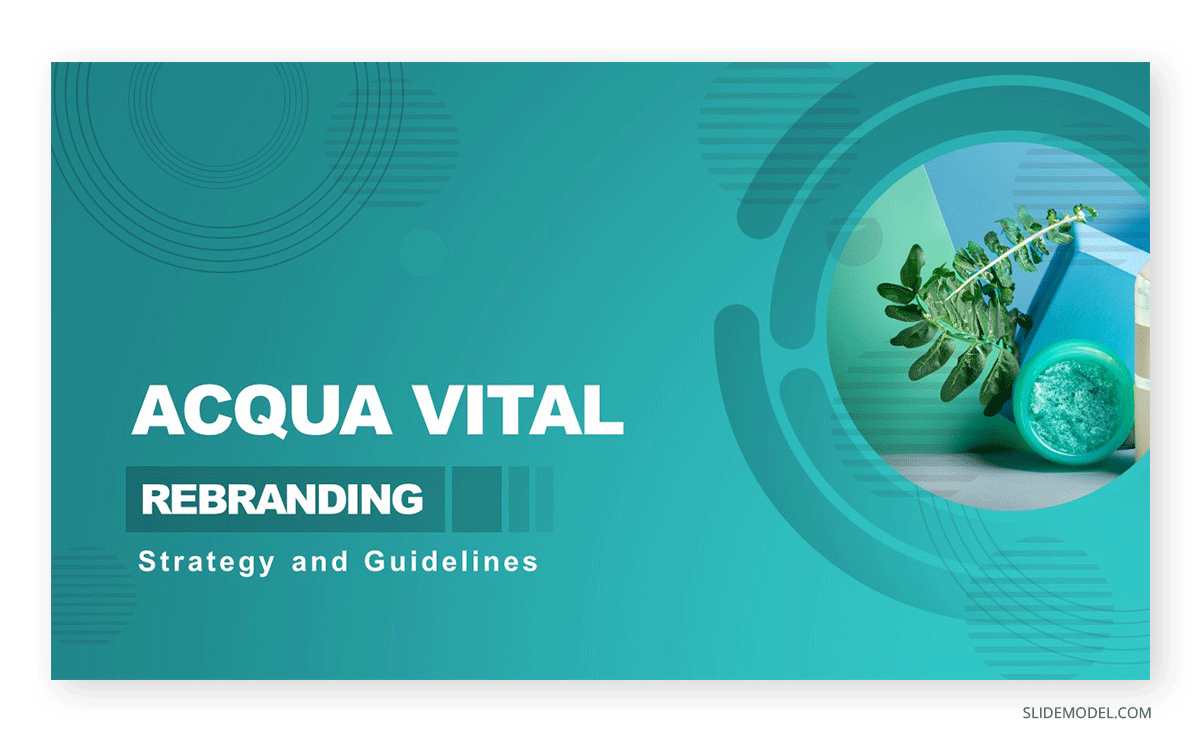
Slide #2 – Introduction
Expose the reasons and processes that triggered the idea to rebrand the company. Bring some clear facts on predictions about how the target market would react to a new branding strategy. An extra slide can be added to introduce the ICP to fellow stakeholders.

Slide #3 – Logo Presentation
Introduce the new logo and its values to potential buyers, and use real-case scenarios to present the logo in style. Discuss the brand’s tone to present itself and interact with the market. If there’s a tagline or a slogan, list it in this slide.
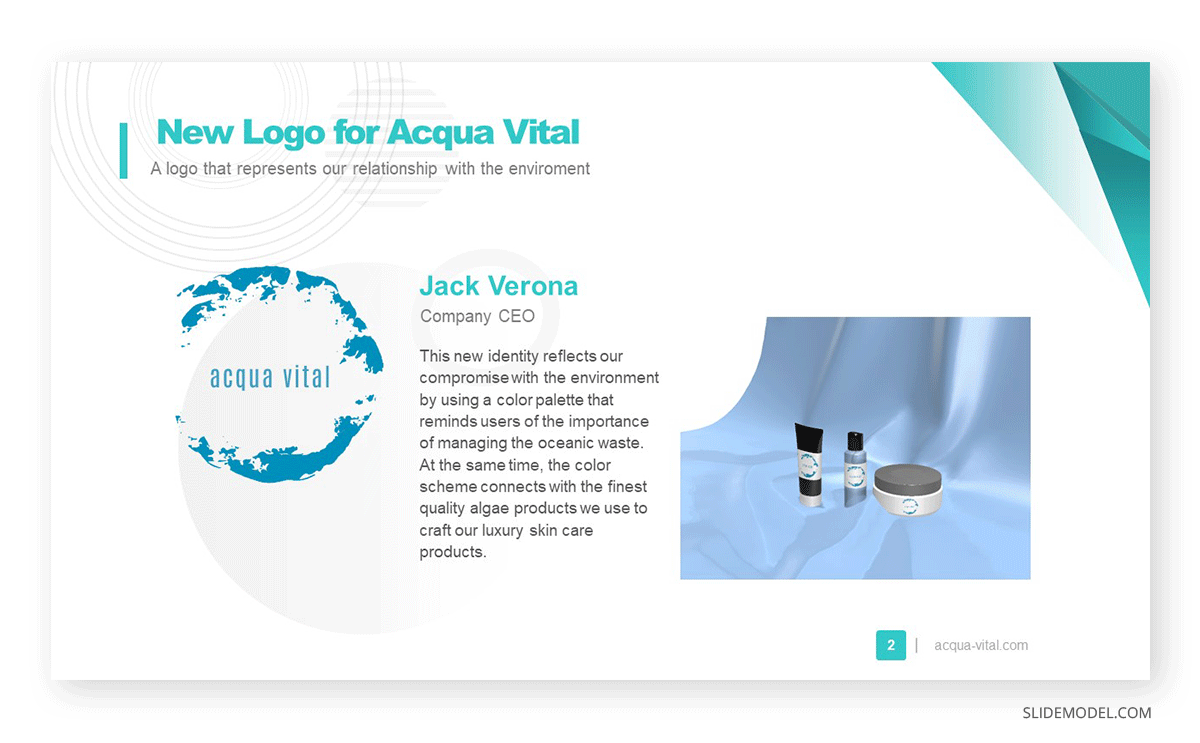
Slide #4 – Color Palette
Similarly to the brand guidelines document, showcase how color will be used for this new brand identity.
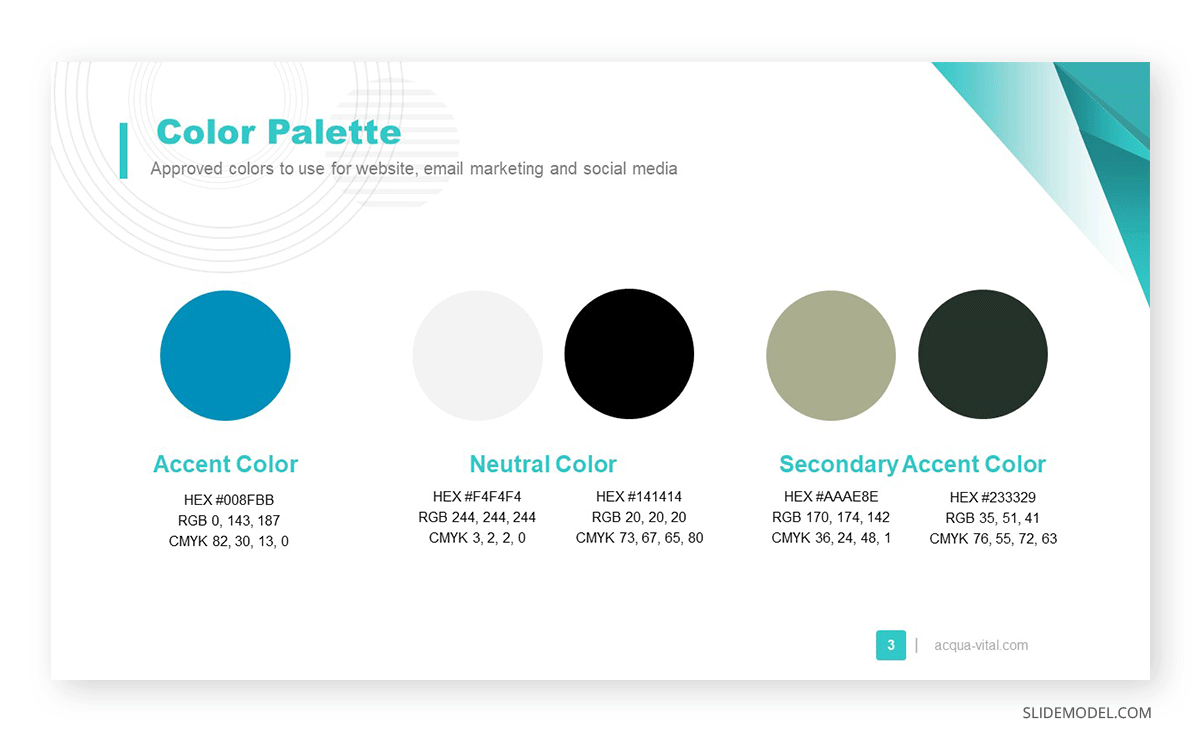
Slide #5 – Typography Styles
Introduce the typefaces to be used and their font variations depending on the context. A good rule to follow is to present a web copy and a printed copy example if the company handles both mediums.

Slide #6 – Image Styles
List down the image styles approved for any kind of publication related to the brand and the minimum size requirements for each medium.
FAQs
How does a strong Brand Identity impact customer loyalty?
– Reflects shared values that resonate with the target audience.
– Builds trust through consistent communication and quality experiences.
– Encourages repeat purchases and word-of-mouth recommendations.
How can personal brands leverage Brand Identity?
– Define what you stand for and offer to your audience.
– Focus on topics relevant to your niche to connect with your target audience.
– Use consistent visuals, messaging, and tone across all platforms to build recognition and trust.
What tools can help in defining a brand’s mission, vision, and values?
– SWOT Analysis: Identify strengths, weaknesses, opportunities, and threats.
– Mission, Vision, and Values Templates: Provide clarity on long-term goals and core values.
– Ideal Customer Profile (ICP) Templates: Understand and define the target audience.
How do visuals like logos and color palettes influence Brand Identity?
– Logos create a recognizable symbol for the brand.
– Color palettes evoke emotions and establish a brand’s personality.
– Consistent use of visuals across platforms strengthens recognition and recall.
What are the challenges in presenting a Brand Identity?
– Balancing creativity with brand consistency.
– Aligning stakeholder expectations with design outcomes.
– Ensuring the branding resonates with the target audience while standing out in the market.
How can a cohesive Brand Identity benefit internal teams?
– Creates alignment across departments by standardizing branding efforts.
– Streamlines content creation with predefined guidelines.
– Enhances team collaboration by fostering a shared understanding of the brand’s goals and values.
Selected Templates for a Brand Identity Presentation
In this section, we will list the templates we recommend from our catalog to present brand identity to stakeholders. These templates work with any version of PowerPoint and also Google Slides.
Final Words
As we have seen, knowing how to create a brand identity is not a complex process but involves multiple steps and inputs from different teams.
Consider estimating the effort dedicated to running your company’s brand identity campaign before labeling it as temporal or permanent branding. Individual elements like the tagline and slogan can be easily updated. Changes in the logo or vision involve a coordinated effort between stakeholders.
